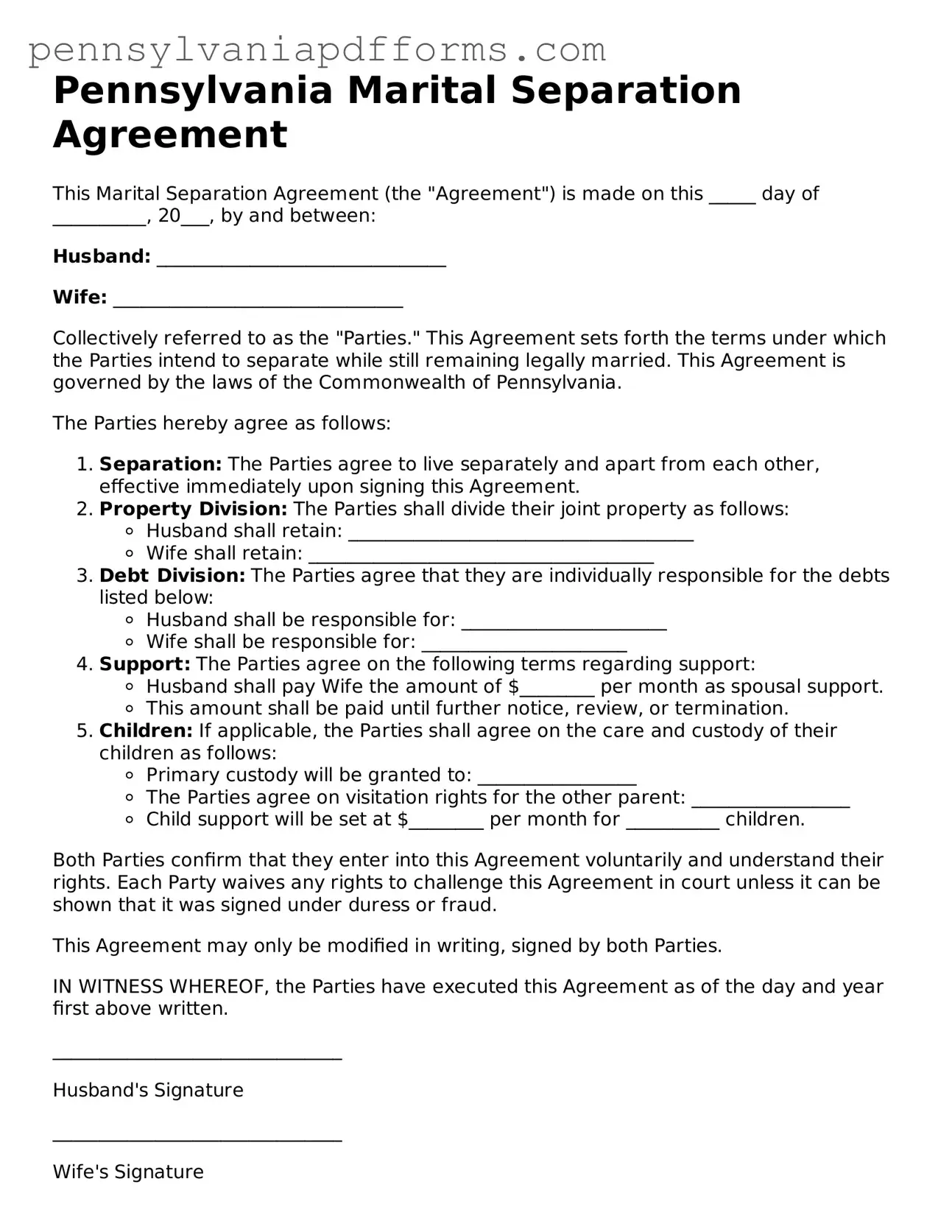The Pennsylvania Marital Separation Agreement form shares similarities with the Divorce Settlement Agreement. Both documents outline the terms and conditions agreed upon by spouses during the separation process. They typically address issues such as division of property, spousal support, and child custody arrangements. While a Marital Separation Agreement may be used when couples choose to live apart without formally ending their marriage, a Divorce Settlement Agreement finalizes the dissolution of the marriage. In essence, both documents serve to clarify the rights and responsibilities of each party, but one is temporary while the other is permanent.
Another document akin to the Marital Separation Agreement is the Child Custody Agreement. This document specifically focuses on the arrangements for children, detailing where they will live, visitation rights, and decision-making responsibilities. While the Marital Separation Agreement may include these elements, the Child Custody Agreement is solely dedicated to ensuring the well-being of the children involved. It helps parents establish a clear framework for co-parenting, which can be crucial during a time of transition.
The Property Settlement Agreement is also similar to the Marital Separation Agreement. This document specifically addresses the division of assets and debts between spouses. Like the Marital Separation Agreement, it aims to provide clarity and fairness in the distribution of property. However, the Property Settlement Agreement is often more detailed regarding financial matters, ensuring that both parties understand their rights concerning marital assets and liabilities.
The Cohabitation Agreement is another document that bears resemblance to the Marital Separation Agreement. This agreement is used by couples who live together but are not married. It outlines the rights and responsibilities of each partner, similar to how a Marital Separation Agreement delineates the terms for separated spouses. Both documents aim to protect the interests of each party and provide a clear understanding of expectations, particularly regarding property and financial matters.
The Prenuptial Agreement, while typically created before marriage, shares some common ground with the Marital Separation Agreement. Both documents deal with the division of assets and financial responsibilities. A Prenuptial Agreement sets terms for how assets will be handled in the event of a divorce, while a Marital Separation Agreement addresses similar issues during the separation period. Each document serves to clarify expectations and protect individual interests.
The Separation Agreement, which is sometimes used interchangeably with the Marital Separation Agreement, is also relevant. This document formalizes the terms of separation between spouses, detailing aspects such as support, custody, and property division. While the name may vary, the function remains the same: to provide a legal framework for couples who have decided to live apart.
The Mediation Agreement is another document that can be compared to the Marital Separation Agreement. This document is created when couples work with a mediator to resolve disputes amicably. It outlines the agreements reached during mediation, which may include issues like child custody and financial responsibilities. Similar to a Marital Separation Agreement, the Mediation Agreement aims to facilitate communication and cooperation between parties during a challenging time.
Lastly, the Postnuptial Agreement is similar to the Marital Separation Agreement in that it addresses financial and property issues after marriage. While a Prenuptial Agreement is created before marriage, a Postnuptial Agreement is established after the wedding, often in response to changing circumstances. Both documents serve to clarify the rights and responsibilities of each spouse, providing a sense of security and understanding in the event of separation or divorce.
